Very upmarket hospitality
I’ve mentioned in the past various
announcements from the Saudi Press Agency about initiatives to promote KSA as a
tourist destination. The country has a reasonably rich number of natural
wonders and places of interest, most of which have yet to receive the full restoration
or tourism promotion treatment. But behind high walls in nearly every city in the land
lie huge and ornate palaces which in themselves are the equivalent of the stately
homes that are the staple of tourism and heritage industries in the western
world. Royal palaces in Britain, including the residences of the monarch Queen
Elizabeth II routinely open to hordes of hoi polloi who are keen to see how the
other half live. Country homes and estates from the grandest like Blenheim,
home of the Churchill family to more modest edifices such as the Tenement House
in Glasgow are great places to learn about the social history of the country. And of course the property owners benefit from the admission fees and merchandise sold. What interest could there be from the average man in the street for the Saudi
palaces? Maybe we are about to find out.
This week there was a press announcement about planned changes to some palaces. Here’s what was reported in the Arab News:
“MAKKAH/RIYADH: Crown Prince Mohammed bin Salman recently announced the launch of the Boutique Group, which plans to transform a number of palaces of historical and cultural significance in Saudi Arabia into ultra-luxury hotels. The move is part of the efforts to showcase the Kingdom’s rich heritage and vibrant culture to visitors from home and abroad, along with the hospitality for which the country is renowned. The first phase of the project focuses on the development of three historical destinations: Al-Hamra Palace in Jeddah, Tuwaiq Palace and Red Palace in Riyadh.
Al-Hamra Palace
Al-Hamra Palace is one of the most historically significant palaces of the modern era, according to Saleh Al-Misnad Al-Tamimi, a researcher in contemporary Saudi history. Inspired by Andalusian culture and style, it was built during the reign of King Saud bin Abdulaziz for Prince Faisal bin Abdulaziz but was not intended to host official receptions and conferences. The palace, which is located to the north of the US embassy, was relatively small when it was built in the late 1950s, Al-Tamimi told Arab News. It was later expanded and turned into a place to receive royal guests and hold official meetings. The prince had an office on the south side of the building, directly overlooking the palace mosque, according to Al-Tamimi. Palace employees would hear requests and complaints from citizens and then pass them on to the royal in his office, close to the reception area. The palace hosted many important events, Al-Tamimi said, including the first conference of foreign ministers of Islamic countries in March 1970, which resulted in the formation of the General Secretariat of the Organization of the Islamic Conference, now known as the Organization of Islamic Cooperation.

Inspired by Andalusian culture and style, Al-Hamra Palace was built during the
reign of King Saud bin Abdulaziz for Prince Faisal bin Abdulaziz.
(From Arab News)
The many foreign leaders and heads of state who met King Faisal at the palace included US President Richard Nixon, Egyptian President Anwar Sadat, Lebanese President Suleiman Frangieh and Sudanese President Jaafar Nimeiry. Egyptian President Gamal Abdel Nasser was a rare exception, who was instead received at the Royal Court in the Khuzam Palace. Al-Hamra Palace was built by the Arab Engineering Company, which had built many similar structures in Jeddah, including those belonging to Prince Nawaf bin Abdulaziz and politician, economist and poet Mohammed Surur Sabban.
After its development by Boutique Group, Al-Hamra Palace will have 77 rooms, including 33 luxury suites and 44 luxury villas. Mohammed H. Al-Ruwaili, from Al-Sudairy Cultural Center in Jouf, described the launch of the Boutique Group as a civilizational, historical and cultural-investment leap that will open up the heritage and cultural treasures of Saudi Arabia for the world to see and appreciate. He said the project aims to capitalize on the aspect of Saudi heritage represented by the luxurious palaces that are nestled in nature and formerly owned by kings and princes, by turning them into tourist attractions that visitors from around the globe can enjoy. With their eye-catching courtyards, gardens and floors, they will be transformed into world-class luxury hotels with ornate interior decorations and unparalleled architectural designs, he told Arab News.
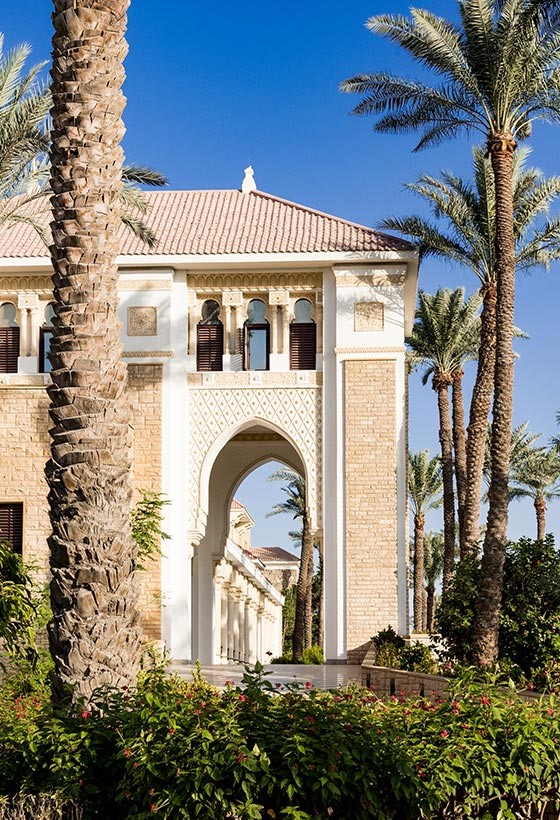
The palace, which is located to the north of the US embassy, was relatively
small when it was built in the late 1950s. (From Arab News)
“I think we are on the verge of an important and qualitative change in investing and introducing historical and cultural destinations that have value in our country,” said Al-Ruwaili, referring to the first phase of the Boutique Group’s project. “The announcement (by the crown prince) is historic as it is likely to be followed by important steps and stages that the citizens of Saudi Arabia will benefit from.” Abdullah Almuneef, dean of the tourism and antiquities faculty at King Saud University, also welcomed the announcement, saying the project will ensure the restoration and preservation of the historic sites by turning them into elite tourist destinations. “It is an important experience for the Kingdom, similar to that of Europe, where many famous palaces have benefited from restoration and preservation projects,” he said.
The Red Palace
King Abdulaziz ordered the construction of the Red Palace in Riyadh in 1942 to serve as a residence for his son, Saud, who was then the crown prince. It was also used to receive official guests. After King Saud moved to his palace in Nasiriyah in 1956, the Red Palace became the seat of the Council of Ministers during the reigns of King Faisal, King Khalid and King Fahd, before becoming the headquarters of the Board of Grievances.
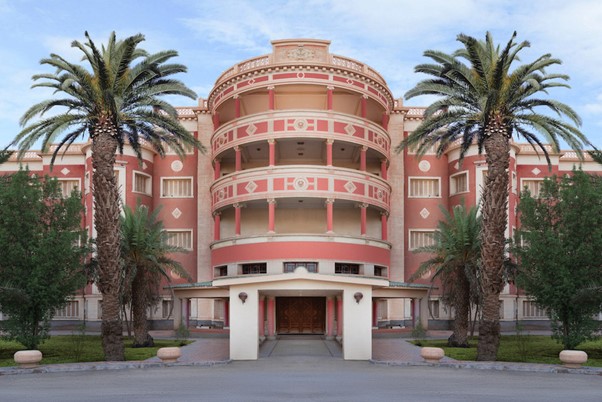
After the redevelopment, the Red Palace will have 71 rooms, including 46 luxury
suites and 25 luxurious guest rooms.
(From Arab News)
It was called the Red Palace on account
of the distinctive color of its exterior. Notable guests hosted within its
walls included Egyptian presidents Nasser and Sadat, Syrian President Shukri
Al-Quwatli, Indian Prime Minister Jawaharlal Nehru, and King Talal bin Abdullah
of Jordan. The palace consists of 16 suites and rooms equipped with air
conditioning and ceiling fans, along with a system that allows sunlight to
illuminate the palace interior. After the redevelopment, the palace will have
71 rooms, including 46 luxury suites and 25 luxurious guest rooms.
Tuwaiq Palace
Tuwaiq Palace is located in Riyadh’s diplomatic quarter, occupying an area of about 24,000 square meters. Designed in 1981 and completed in 1985, it was awarded the Aga Khan International Award for Architecture in 1998. Now the palace is a center for cultural activities, conferences, seminars, specialized exhibitions and social activities. It also hosts workshops, festivals, meetings and training events. It includes several halls, public facilities and hospitality spaces behind a long, wavy wall covered in Riyadh stone, a beige-colored limestone quarried in Saudi Arabia.

Designed in 1981 and completed in 1985, Tuwaiq Palace was awarded the Aga Khan
International Award for Architecture in 1998.
(From Arab News)
It also has a three-story guesthouse
overlooking the valley, with four suites and 25 rooms. There are several
reception rooms and lecture halls, all equipped with presentation and
translation facilities, in addition to dining halls and other hospitality
services. Three distinctive white canopies extend over the main halls, the
glass walls of which offer a breathtaking panorama of the surrounding valley,
gardens and scenic outdoor paths. After redevelopment, the palace will include
96 rooms, including 40 luxury suites and 56 luxury villas.
Khuzam Palace
Although it is not currently included in the redevelopment plan, Khuzam Palace has great potential to become a boutique hotel. Located in Al-Nazla Al-Yamaniya in the southeast of historic Jeddah, the palace was named after the Khuzam tulips that grow abundantly in its grounds. Construction began in 1928 and its was completed in 1932. “The palace was built of stone bricks and its roof was constructed using Javanese wood,” said Al-Tamimi. “About three years later, the Egyptian National Company built annexes to it that were made of reinforced concrete, including the palace that King Abdulaziz used to receive kings, heads of state, ministers, ambassadors and senior officials.”
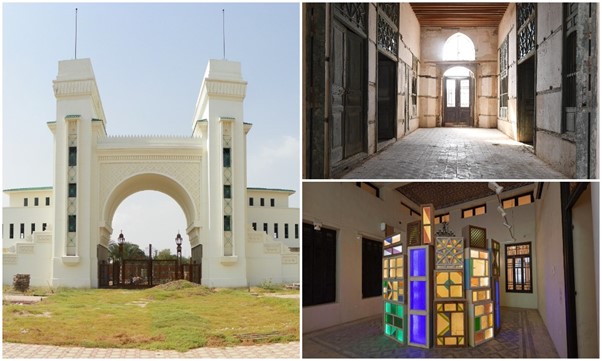
Located in Al-Nazla Al-Yamaniya in the southeast of historic Jeddah, Khuzam Palace was named after the Khuzam tulips that grow abundantly in its grounds. (From Arab News)
According to Al-Tamimi, Khuzam Palace
was where the concession agreement allowing for oil exploration was signed
between the Saudi government, represented by Minister of Finance Sheikh
Abdullah bin Suleiman, and Standard Oil of California, represented by Lloyd
Hamilton, on May 29, 1933. The palace also hosted the signing ceremonies for a
border agreement with Kuwait and a reciprocal memorandum with Egypt regarding
construction projects, according to Al-Tamimi. Other notable events that took
place there included the renewal of the Treaty of Jeddah with the British
government in 1943, the signing of the Dhahran Airfield Agreement with the US,
a commercial agreement with Syria, and a friendship treaty with Pakistan. Such
has been the significance of the palace throughout the Kingdom’s history that
its iconic main gates once featured on Saudi banknotes.
Al-Saqqaf Palace
Al-Saqqaf Palace, also known as the Royal Al-Bayyadiyah Palace, is situated in the holy city of Makkah. It is expected to be included in the next phase of the Boutique Group project, as it is currently undergoing restoration work. “The palace is a lofty beacon of architectural art and one of the oldest archeological buildings,” Samir Ahmed Barqa, a researcher of the history of Makkah, told Arab News. “It represents heritage architectural designs and bears the Islamic architectural character because it contains a lot of Islamic arts and decorations. It also witnessed many high-level occasions throughout a royal era, whose roots extend to the first Saudi state.”
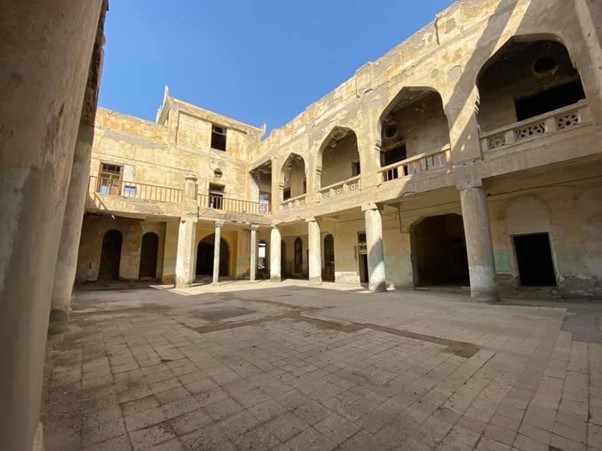
Al-Saqqaf Palace, also known as the Royal Al-Bayyadiyah Palace, is situated in
the holy city of Makkah.
(From Arab News)
The site consists of two older palaces,
Al-Bayyadiyah Al-Shamali and Al-Bayyadiyah Al-Janoubi, which were combined with
a newer palace built by King Abdulaziz, who lived there from 1924. “The palace
became the seat of government when the founding king came to Makkah,” said
Barqa. “After that, the palace was used as a headquarters for the deputy of
King Abdulaziz in Hejaz, his son Prince Faisal, and in later periods it was
used as a headquarters for the Muslim World League and then as a headquarters
for Makkah Police.”
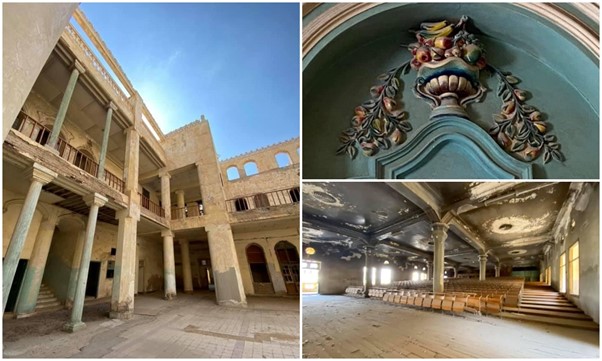
King Abdulaziz ordered the construction of several halls to host visiting presidents, kings and other dignitaries, as well as the heads of Hajj missions. (From Arab News)
King Abdulaziz ordered the construction of several halls to host visiting presidents, kings and other dignitaries, as well as the heads of Hajj missions. The palace became the headquarters of the Royal Court in 1953, and then was occupied by a number of government departments between 1960 and 1982. It includes more than 100 rooms, including a central meeting hall. The main entrance is distinguished by its exquisite grandeur. If included in the boutique project, it would no doubt become a significant attraction for religious tourists visiting Makkah and enthralled by the Kingdom’s heritage.”
So, in this first stage it looks as if access to the palazzi will be reserved for those few who can afford to stay in the new hotels. But surely this is a first step, and it will be but a matter of time before a wider audience is allowed to enter and marvel at the richness and splendour that several generations of oil-funded royalty had built for themselves. This could be very interesting.
